Digital Painting Techniques

Sign up for access to the world's latest research
Abstract
AI
AI
This chapter explores the importance of custom brushes in digital painting and provides a detailed tutorial on creating and utilizing these brushes. It outlines several steps, including image manipulation techniques and adjustments to brush settings, aimed at improving texture and blending in artworks. Through practical examples, the chapter demonstrates how to leverage custom brushes to enhance the quality and originality of digital paintings.







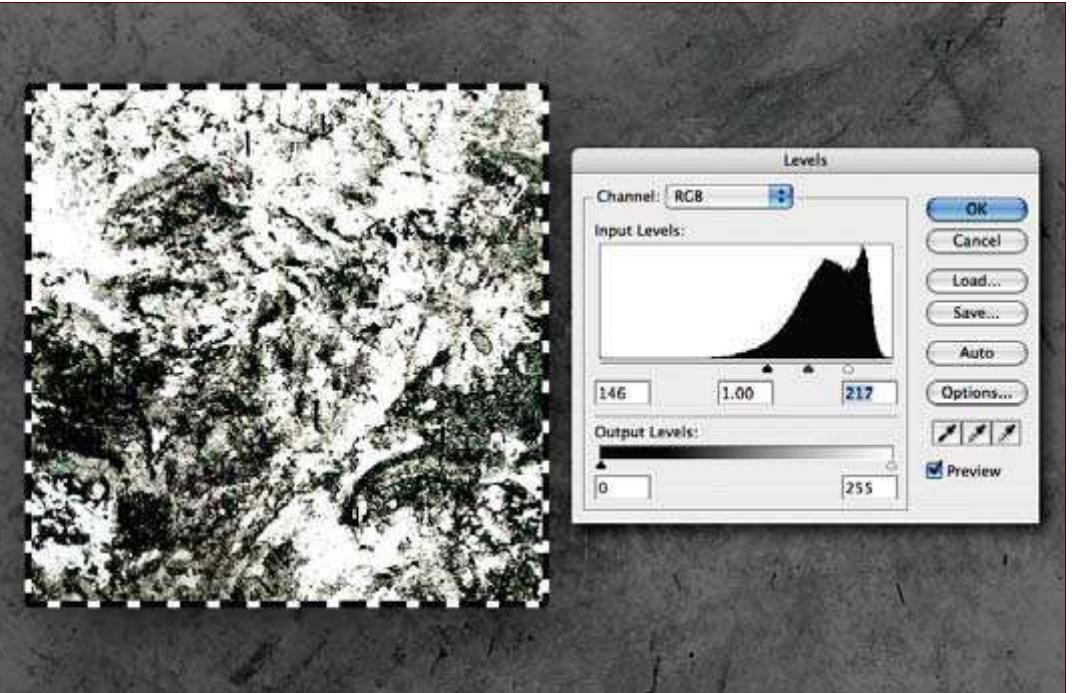


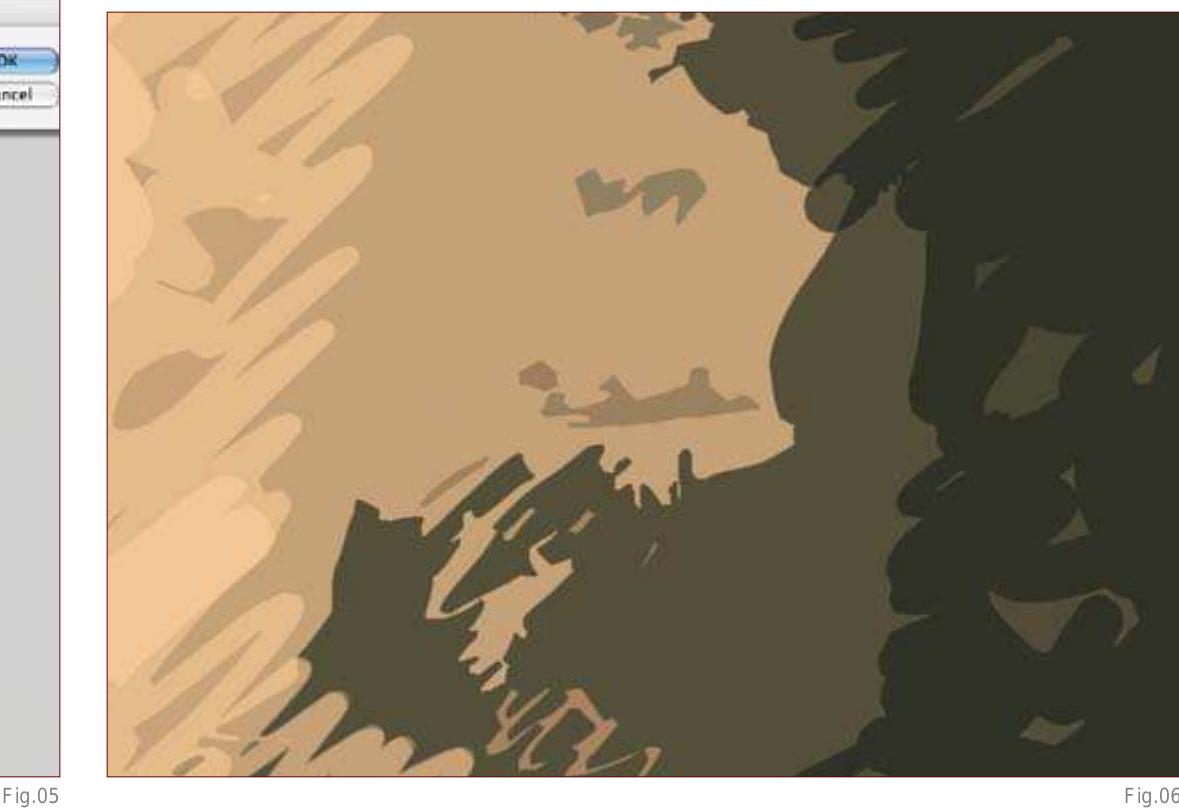














































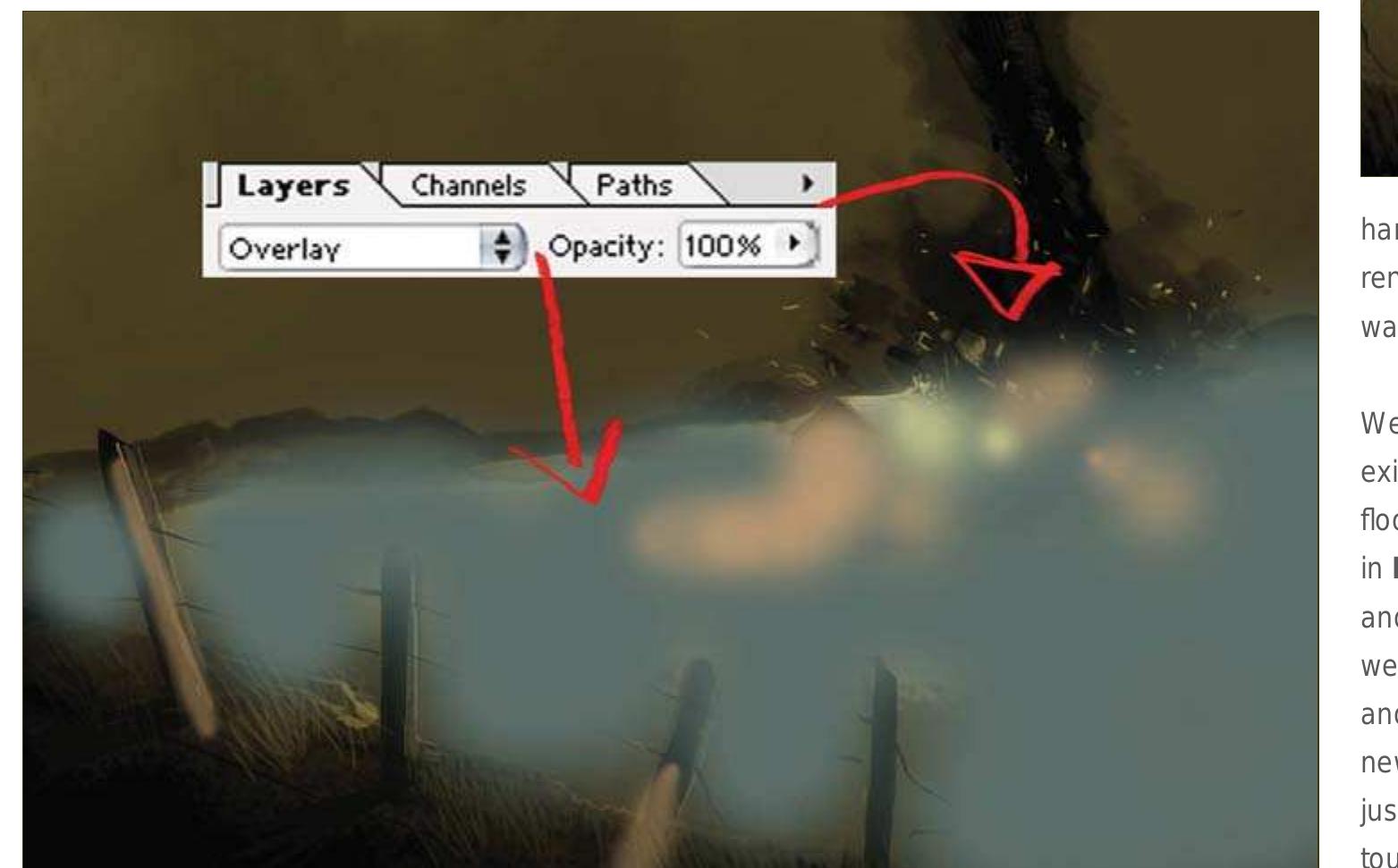














































































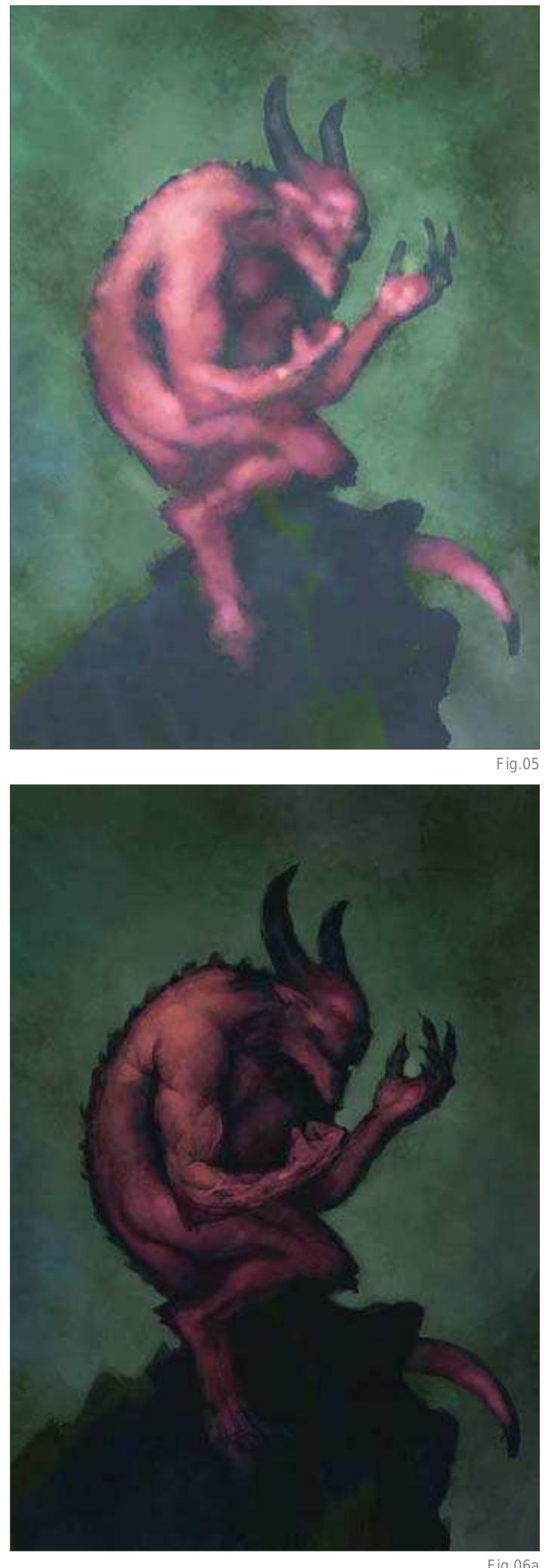
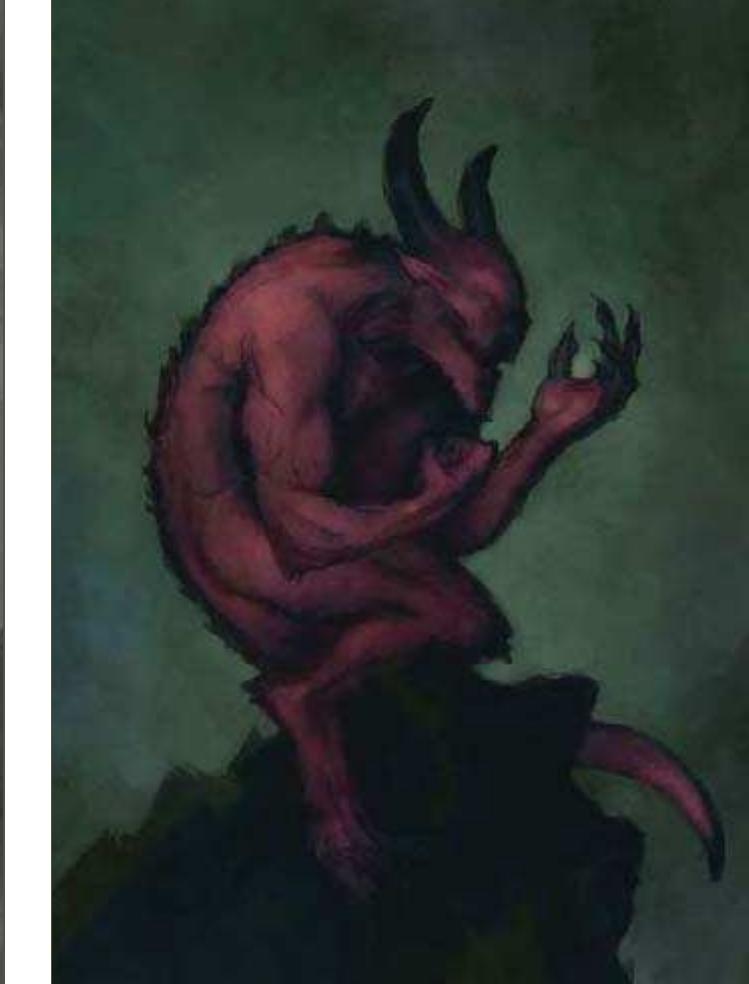




















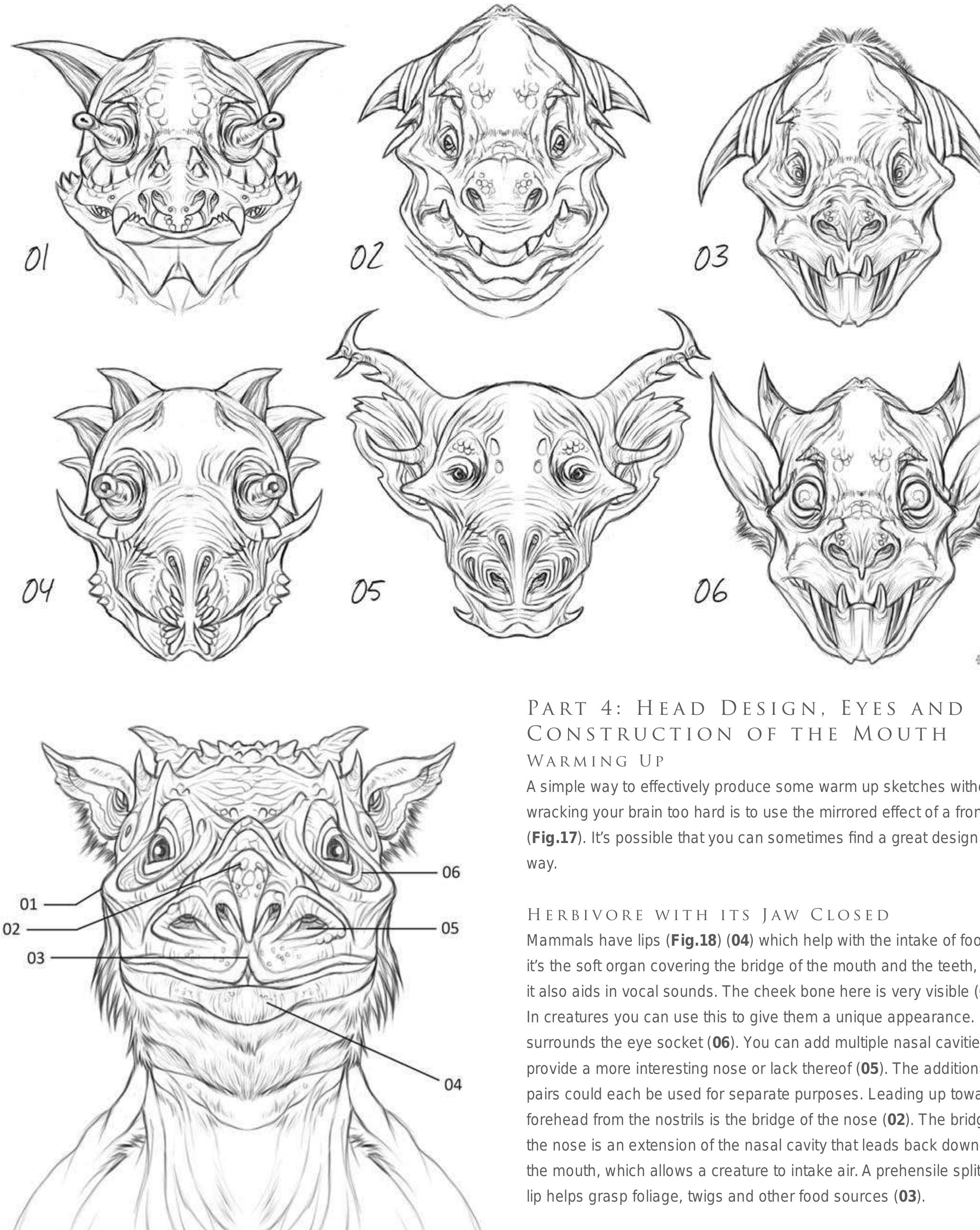





































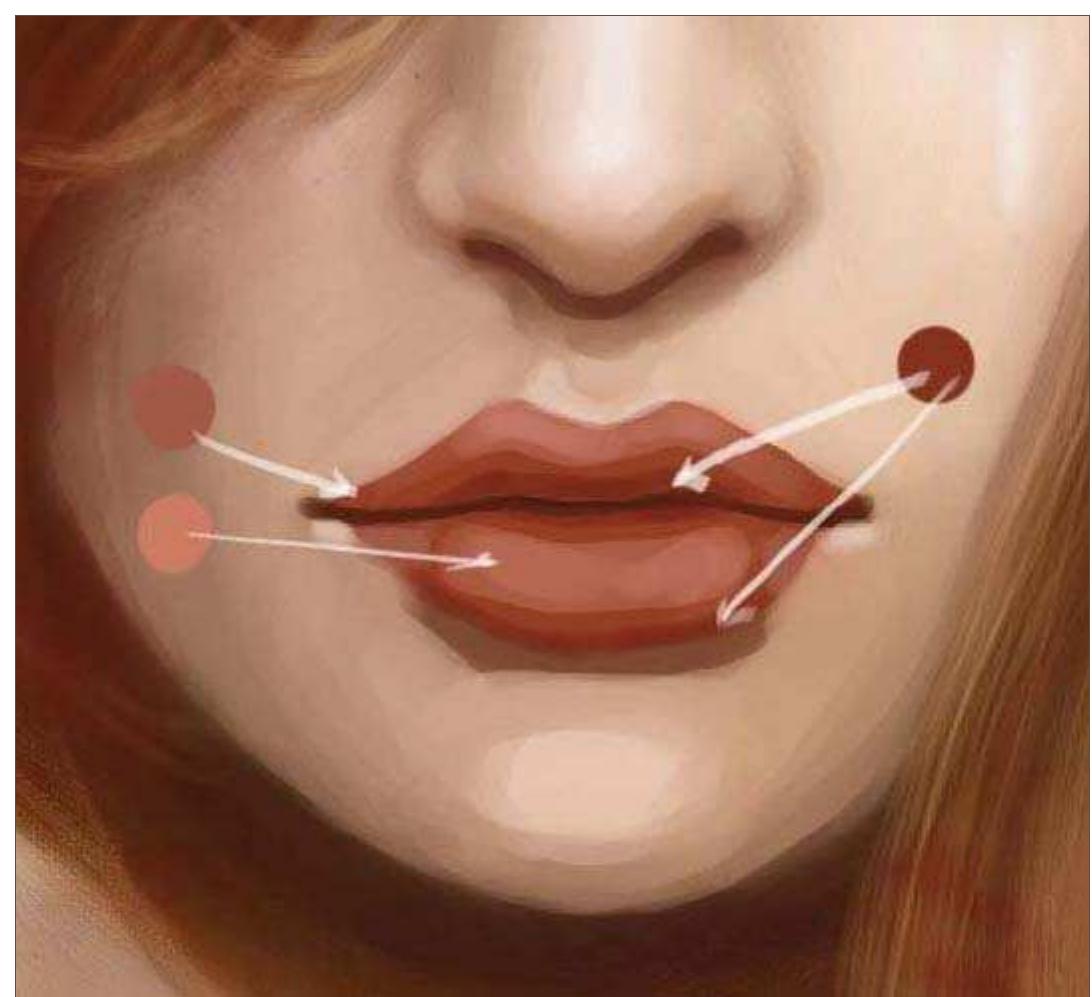




































![Accentuate the skin around it with some more highlights, especially on the outside where the light would hit the strongest. Once that is done it’s time to think about the eyelashes. We'll add a new layer for them as it’s easier to paint them that way without fear of ruining your eye. Choose a small round brush with Opacity and Size] itter set to Pen Pressure, and start painting in the lashes with flicking motions. Unless caked in mascara and tortured with a lash curler, eyelashes don’t usually curl upwards all that much (Fig.11).](https://figures.academia-assets.com/36341622/figure_234.jpg)


















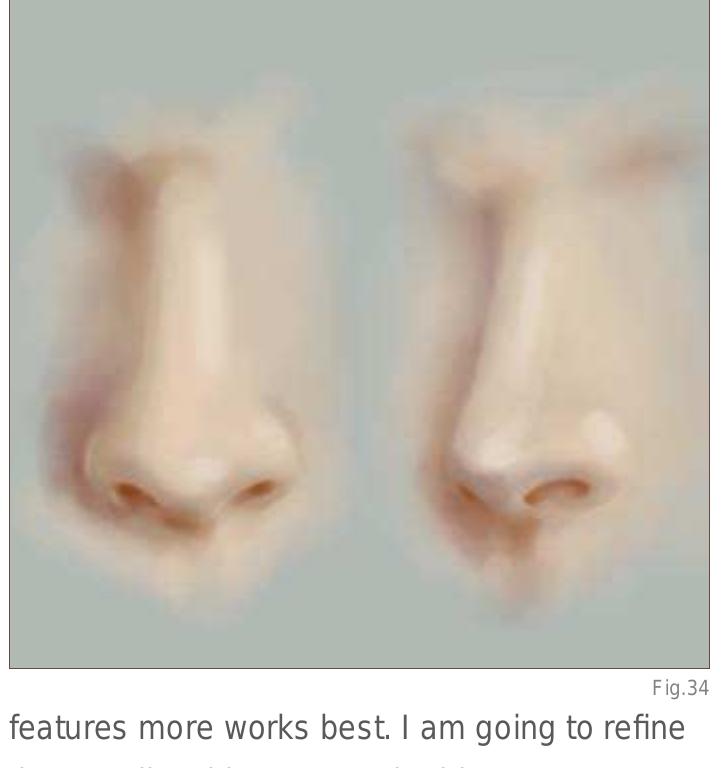




















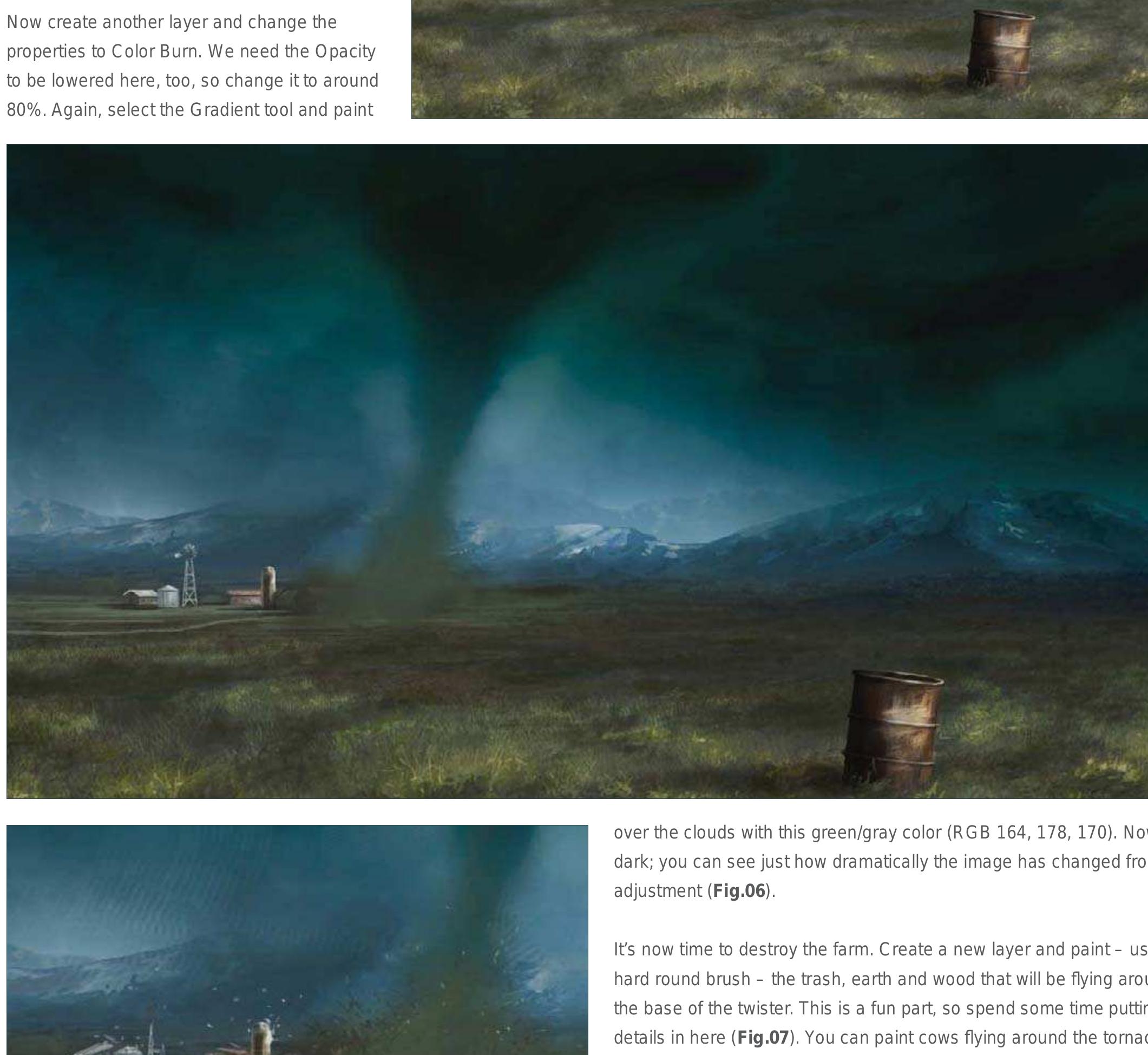
















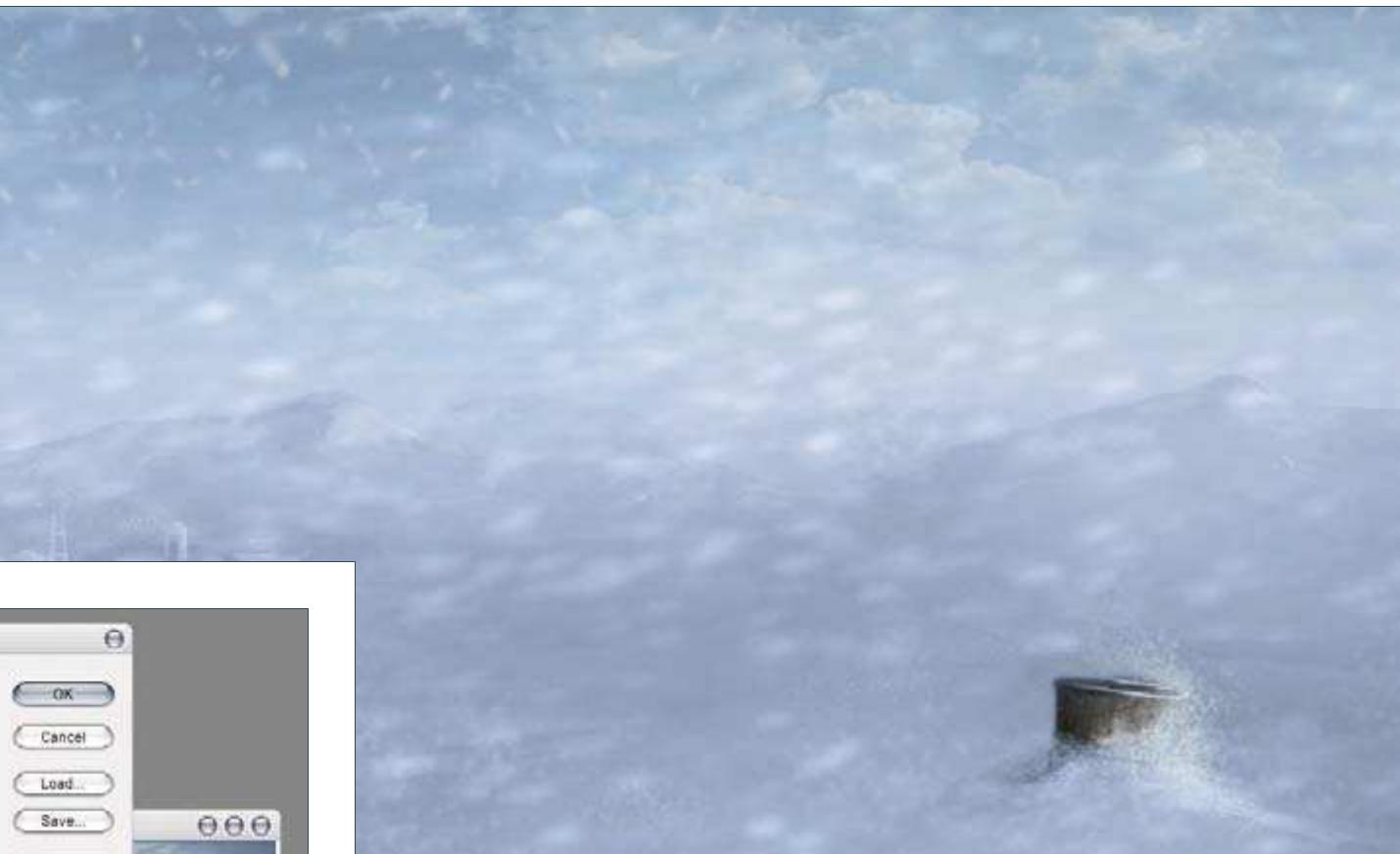

















































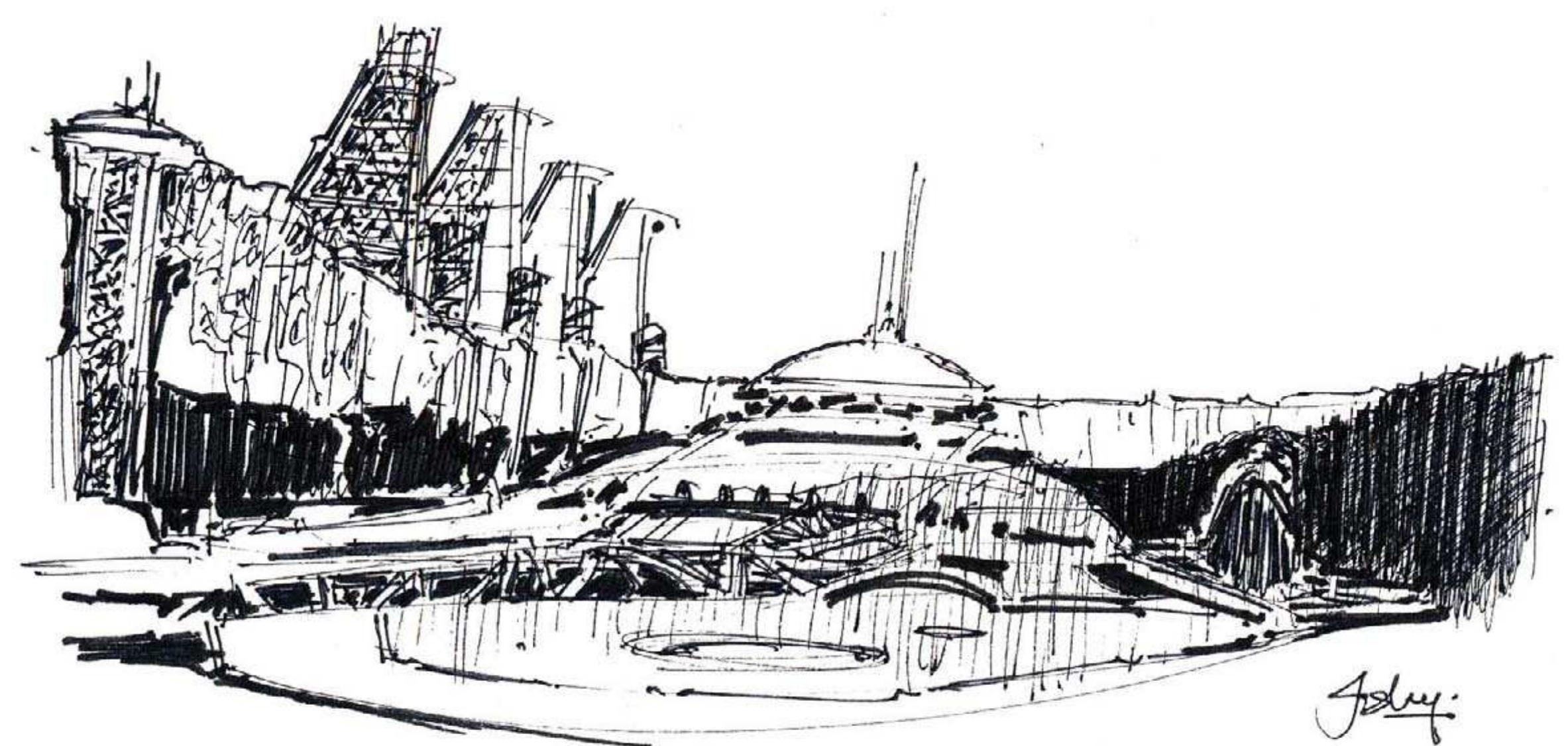







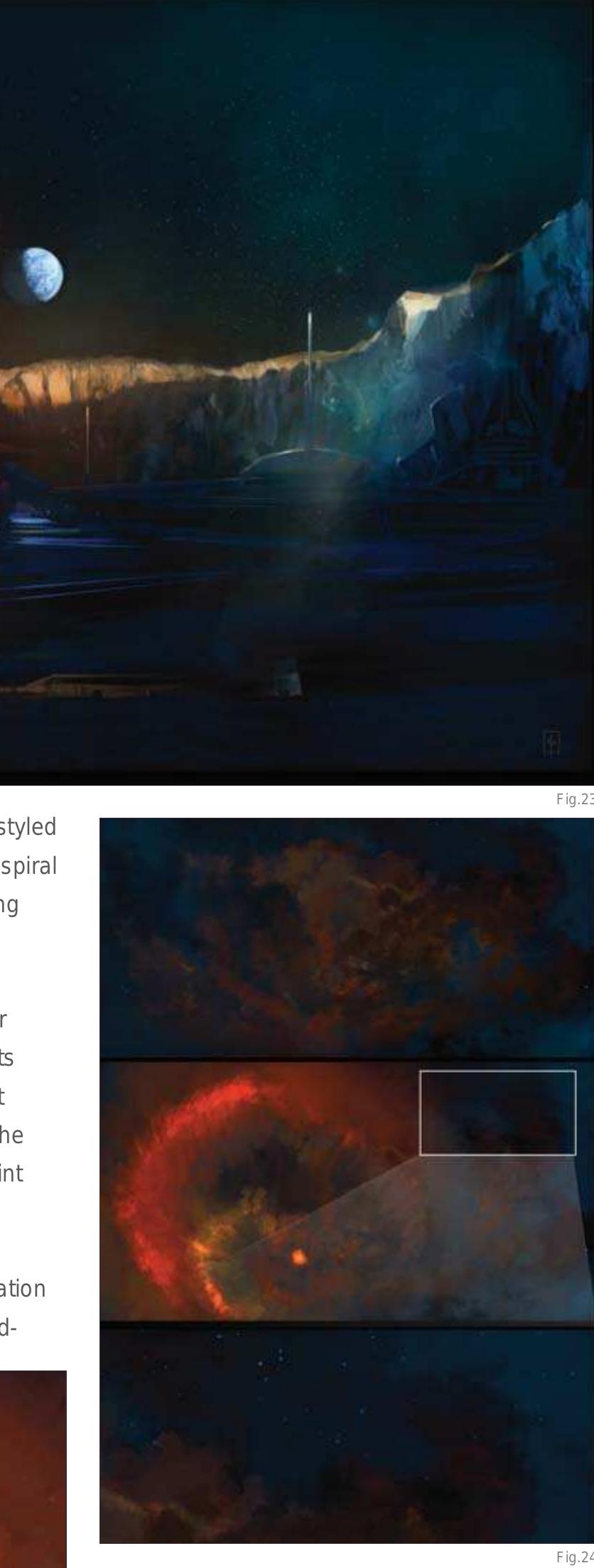



![As a backdrop, let's use our own natural satellite, the moon, in full color, to depict a barren planet. Often, the lunar surface is depicted in a bland gray, or a false desaturated blue color. However, the advent of webcams and improved technology now show that the moon is indeed more colorful than previously thought (color photography provided from the 1994 DSPE [Deep Space Program Science Experiment] Clementine satellite). The key issue to consider when drawing any large circular object on a curved body, such as a planet, moon or asteroid, is the perspective.](https://figures.academia-assets.com/36341622/figure_353.jpg)





















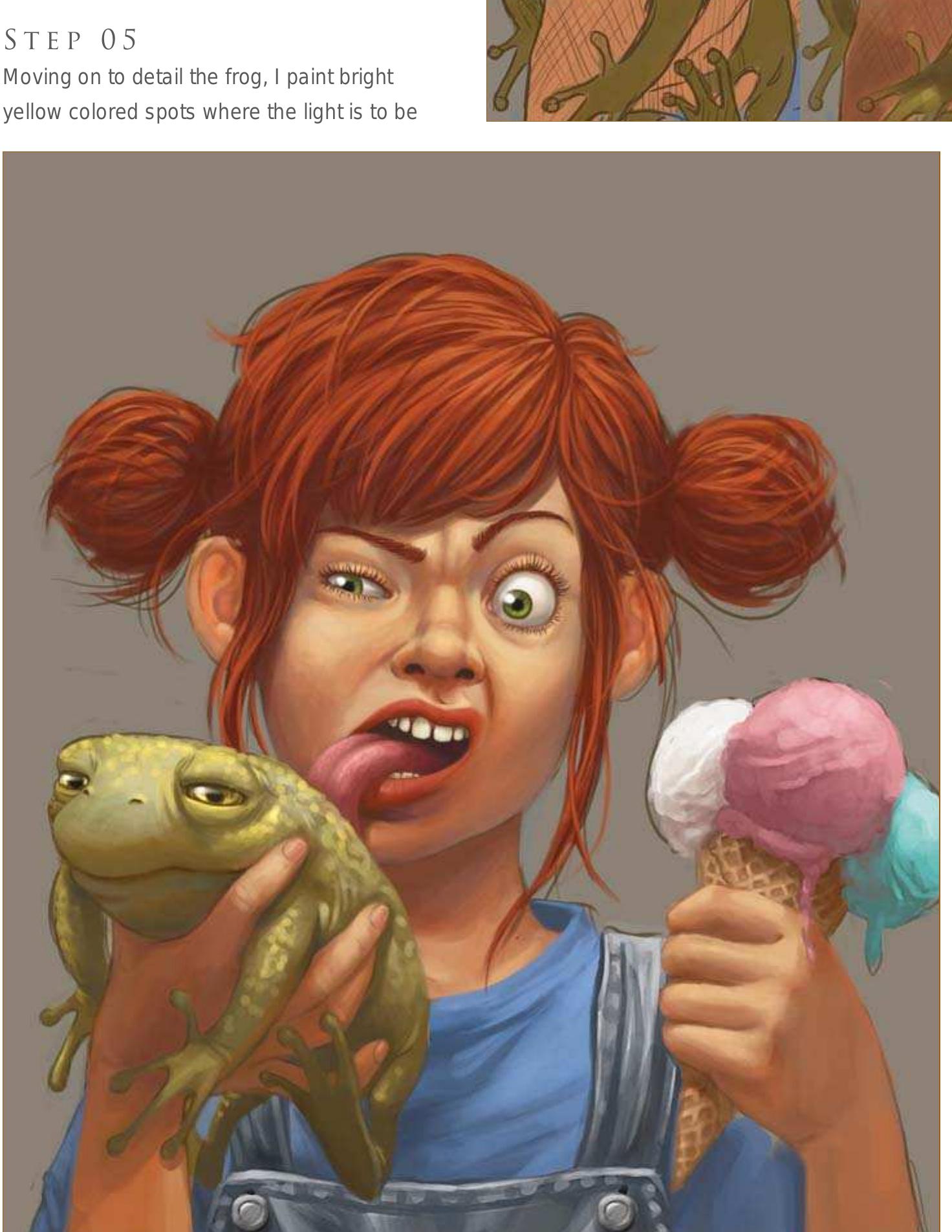



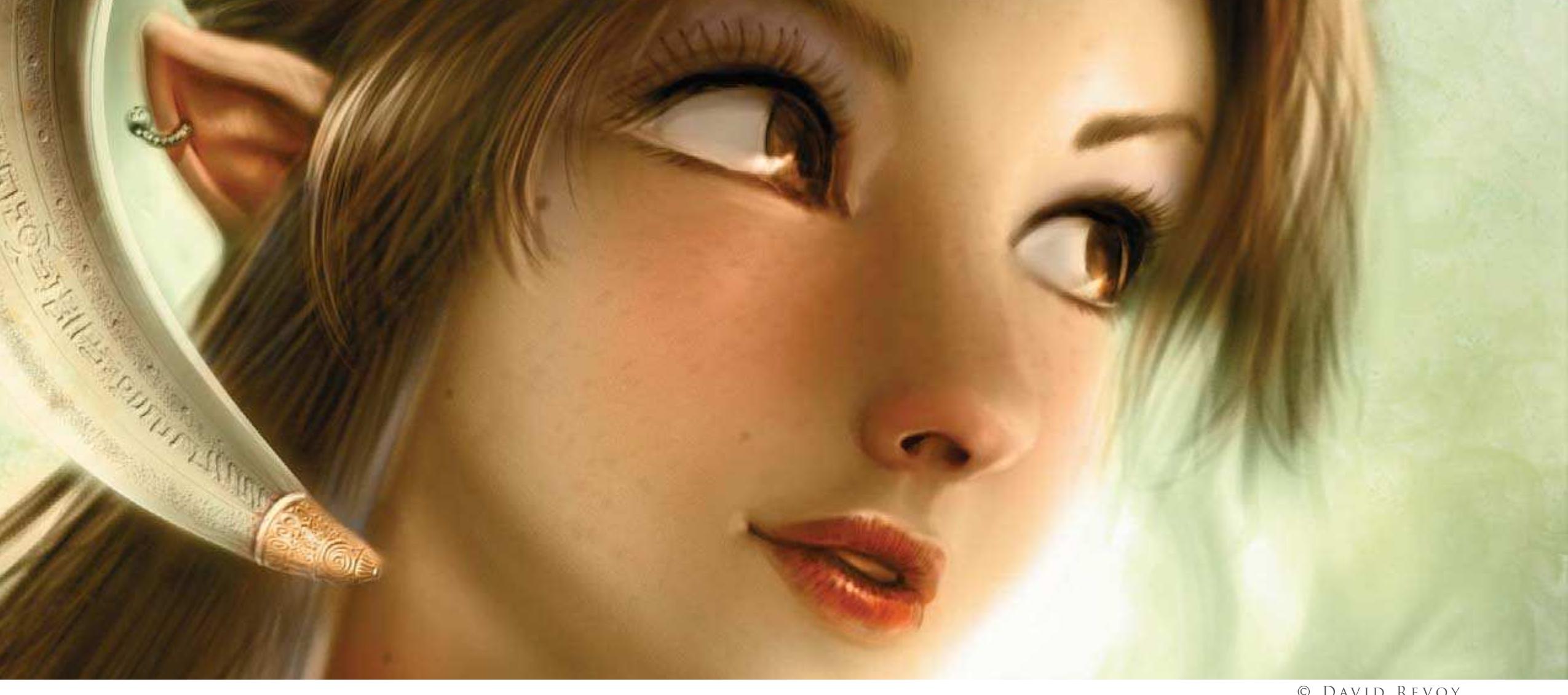















































Related papers
Many painting conservators are often convinced that they are unable to obtain adequate retouching results due to their technique, when in reality their failure is the consequence of a poor choice of brushes. It has been observed that choosing the right brush is very important in order to fulfil all quality aspects that should be taken into consideration when planning a retouching project. This paper endeavours to provide comprehensive information about the history, examination and evaluation of brushes. It is aimed at all conservators who purchase brushes for retouching practice, with the objective to determine which are the best ones currently on the market. This study demonstrates that the shape and size of the brush must fully correspond to the technique and method of retouching, in order to obtain optimal results. The article is written by two investigators from different countries, Portugal and Croatia, who share their own personal retouching practices.
IEEE transactions on visualization and computer graphics, 2018
Relief is an art form part way between 3D sculpture and 2D painting. We present a novel approach for generating a texture-mapped high-relief model from a single brush painting. Our aim is to extract the brushstrokes from a painting and generate the individual corresponding relief proxies rather than recovering the exact depth map from the painting, which is a tricky computer vision problem, requiring assumptions that are rarely satisfied. The relief proxies of brushstrokes are then combined together to form a 2.5D high-relief model. To extract brushstrokes from 2D paintings, we apply layer decomposition and stroke segmentation by imposing boundary constraints. The segmented brushstrokes preserve the style of the input painting. By inflation and a displacement map of each brushstroke, the features of brushstrokes are preserved by the resultant high-relief model of the painting. We demonstrate that our approach is able to produce convincing high-reliefs from a variety of paintings(wit...
Computing Research Repository, 2010
Rendering techniques based on a random grid can be improved by adapting brushstrokes to the shape of different areas of the original picture. In this paper, the concept of Coherence Length Diagram is applied to determine the adaptive brushstrokes, in order to simulate an impressionist painting. Some examples are provided to instance the proposed algorithm.
KSII Transactions on Internet and Information Systems, 2017
We present a computerized framework for producing color pastel painting from the visual information extracted from a photograph. To express color pastel painting, we propose a multi-layered framework where each layer possesses pastel stroke patterns of different colors. The stroke patterns in the separate layers are merged by a rendering equation based on a participating media rendering scheme. To produce the stroke patterns in each layer, we review the physical properties of pastels and the mechanism of a convolution framework, which is the most widely used scheme to simulate stick-shaped media such as pencils. We devise the following computational models to extend the convolution framework to produce pastel strokes: a bold noise model, which mimics heavy and clustered deposition of pigment, and a thick convolution filter model, which produces various pastel stroke patterns. We also design a stochastic color coordination scheme to mimic pastel artists' color expression and to separate strokes in different layers. To demonstrate the soundness of approach, we conduct several experiments using the models and compare the results with existing works or real pastel paintings. We present the results for several pastel paintings to demonstrate the excellent performance of our framework.
Proceedings of the 20th spring conference on …, 2004
What we present in this paper is a 2D non-photorealistic, stroke-based image rendering technique, which is a fully automatic template-based painting method controlled by the structure of the model image. Namely it is based on dominant, weighted image edges and ridges extracted by a multiscale edge/ridge detection method. Stroke sizes (scales) and painting directions are both controlled by edge and ridge weights and orientations. This way the painting process becomes more "natural" in the sense that all of its parameters are guided by image features. We also present different painting variations based on this technique.
The Visual Computer, 2006
This paper proposes Algorithmic Painter, an algorithm that can produce various styles of painting from source photos. Algorithmic Painter is created by enhancing Synergistic Image Creator, a painterly rendering method, so that it is highly expressive but still preserves the essential characteristics of the source photo. To achieve this, our method extracts three types of image segments automatically from a source photo by a newly proposed classification method: edge areas, homogeneous areas, and highly contrastive areas. Next, each obtained image segment is converted into a brushstroke. Finally, the target picture is rendered by assigning a color to each pixel. Furthermore, this method can control the curvy shapes of brushstrokes, so that the obtained image can incorporate not only various artistic touches but also natural touches. As an example, the paper describes the composition technique for three considerably different painting styles.
Art and Design Review Journal , 2022
Impasto is one of the fascinating techniques in studio painting that traces its foundation to the period between the 17 th and 19 th century Italian painters like van Gogh. It is characterised by thick application of paint in a plastering mode to artistically model forms on a canvas using either a bristle brush or a palette knife. When effectively executed, the technique finishes with the effect of ridges that cast shadows under grooves created by the thick application to give the painting its unique tactile contrasting appearance. In digital painting, the painterly effect of impasto is simply impossible to execute. Most of the well-known graphic application software cannot offer any applicator that can render the characteristic effect excellently. The author of this paper has developed a practical scheme for achieving this result using the Craquelure Filter in Adobe Photoshop version 21. The principal objective of the author is to employ the descriptive and demonstrational research methods to illustrate this artefactual scheme, which constitutes a practice-led exercise under the design-based research scheme. In this scheme, the author engages two of the major digital painting techniques: "Digital photo-art" and "Traditional digital painting" techniques to execute a figure painting composition in impasto style.
2008
We introduce a novel technique to generate painterly art maps (PAMs) for 3D nonphotorealistic rendering. Our technique can automatically transfer brushstroke textures and color changes to 3D models from samples of a painted image. Therefore, the generation of stylized images or animation in the style of a given artwork can be achieved. This new approach works particularly well for a rich variety of brushstrokes ranging from simple 1D and 2D line-art strokes to very complicated ones with significant variations in stroke characteristics. During the rendering or animation process, the coherence of brushstroke textures and color changes over 3D surfaces can be well maintained. With PAM, we can also easily generate the illusion of flow animation over a 3D surface to convey the shape of a model.
Macromolecules, 2004
External stimuli, such as light, solvent, pH, or an electric field, allow for a fine-tuning of the surface properties of specially designed responsive polymer materials. 1-6 This behavior can be used for regulation and switching of wetting behavior, adhesion, adsorption, etc. 7-9 An important example of the stimuli responsive surfaces is represented by mixed polymer brushes consisting of two or more incompatible polymers grafted to the same substrate. Successful synthetic methods for
2008 3rd IEEE International Workshop on Horizontal Interactive Human Computer Systems, 2008
This paper presents a novel interface for a digital paint system: IntuPaint. A tangible interface for a digital paint easel, using an interactive surface and electronic brushes with a tuft of bristles, has been developed. The flexible brush bristles conduct light by means of total internal reflection inside the individual bristles. This enables to capture subtle paint nuances of the artist in a way that was not possible in previous technologies. This approach provides natural interaction and enables detailed tracking of specific brush strokes. Additional tangible and finger-based input techniques allow for specific paint operations or effects. IntuPaint also offers an extensive model-based paint simulation, rendering realistic paint results. The reality-based approach in the combination of user interface and paint software is a new step forward to bridge the gap between physical and digital painting, as is demonstrated by initial user tests.
Sensors, 2020
There is a growing interest in cultural heritage preservation. The notion of HyperHeritage highlights the creation of new means of communication for the perception and data processing in cultural heritage. This article presents the Digital Surface HyperHeritage approach, an academic project to identify the topography of art painting surfaces at the scale at which the elementary information of sensorial rendering is contained. High-resolution roughness and imaging measurement tools are then required. The high-resolution digital model of painted surfaces provides a solid foundation for artwork-related information and is a source of many potential opportunities in the fields of identification, conservation, and restoration. It can facilitate the determination of the operations used by the artist in the creative process and allow art historians to define, for instance, the meaning, provenance, or authorship of a masterpiece. The Digital Surface HyperHeritage approach also includes the d...
— In the history of Chinese ink painting and Western water-media painting, there are a list of brushes developed over the years. The tools developed are highly related to the skill requirements, techniques developed and the chosen painting surfaces In this project, a comparison of Chinese and Western brushworks are compared. Through the comparison of Chinese calligraphy and ink painting brushworks and Western water-media painting brushworks and their tools, the advantages of both brushwork application processes can be combined with minor sacrifice of their original capacity. After knowing the strength and weakness of these two categories of brushwork application, the results can be introduced to current commercial applications including animation, digital painting and digital image processing.
Proceedings of the Symposium on Non-Photorealistic Animation and Rendering - NPAR '17, 2017
Figure 1: Our methods allow new and improved edge-and substrate-based effects for watercolor stylization: edge darkening (red), gaps (blue), overlaps (green) and dry-brush (yellow). Still Life, model by Dylan Sisson © Pixar Animation Studios.
Vector-based software has revolutionized scientific illustrating and is well established in taxonomy. However, simple line drawings lack depth information. Shading techniques, such as stippling-the application of dots to generate shade-are the methods of choice for simulating shade, structure, shape, and texture. In this paper, a step-by-step guide for digital stippling is presented. Manual stippling offers great flexibility to achieve highly realistic results. A round brush is applied to the line art by tapping. To drastically reduce time consumption and generate homogeneous tinges, a semiautomation was developed: the smallest units of symmetric stippling patterns are stored in a brush library. Using macroinstructions (macros), such stored raw patterns are converted into symmetric repetitive patterns. This way, stippling can be applied quickly and evenly across large areas of the underlying line drawing. These methods come with all the advantages of vector illustrations, such as high scalability, reproducibility and easy correction of strokes that have turned out imperfect.
Computer Animation and Virtual Worlds, 2013
In this publication we will look at the different methods presented over the past few decades which attempt to recreate digital paintings. While previous surveys concentrate on the broader subject of non-photorealistic rendering, the focus of this paper is firmly placed on painterly rendering techniques. We compare different methods used to produce different output painting styles such as abstract, colour pencil, watercolour, oriental, oil and pastel. Whereas some methods demand a high level of interaction using a skilled artist, others require simple parameters provided by a user with little or no artistic experience. Many methods attempt to provide more automation with the use of varying forms of reference data. This reference data can range from still photographs, video, 3D polygonal meshes or even 3D point clouds. The techniques presented here endeavour to provide tools and styles that are not traditionally available to an artist.
2011
We present a painterly rendering technique that emphasizes smooth line flows to describe important shapes in the image, as well as contributing in an essential part to the final stylistic artwork. Our method uses the smoothed edge tangent flow (ETF) [20] for stroke pathing, and provides an artist-friendly way to control the general look and feel of the image using familiar brush stroke properties and colour theme palettes. We achieve a highly stylized expressionistic look that can be applied to still photographs and portraits.
2012
We present a method that takes a raster image as input and produces a painting-like image composed of strokes rather than pixels. Unlike previous automatic painting methods, we attempt to use very few brush-strokes. This is accomplished by first segmenting the image into features, finding the medial axes points of these features, converting the medial axes points into ordered lists of image tokens, and finally rendering these lists as brush strokes. Our process creates images reminiscent of modern realist painters who often want an abstract or sketchy quality in their work. CR Categories: I.3.7 [Computing Methodologies ]: Computer Graphics-2D Graphics
Nanyang Technological University, 2020
This paper will address the current possibilities of replicating 2D Chinese ink strokes in a digital 3D form, specifically through the 3D software Maya, and the Python programming language. The visual qualities of ink strokes will be analyzed, such as how the speed, pressure and deformation of a brush influence the qualities of the resulting mark. Attempts to replicate such qualities will then be demonstrated in Maya, and a comparison of the results with the initial 2D references. I will then discuss the way in which Python helps optimize the work of generating brushstrokes, and how the process I have developed might fit into a 3D or 2D animation workflow. Such practical exploration of adapting a traditional art form for contemporary digital art and animation will also demonstrate the possibilities of the role of technical artists in developing tools for specific use cases, as well as increasing experimentation with art making in digital software. Calligraphy, which results in brushwork techniques that focus less on tediously precise duplications of nature, opting instead for summarising the
The purpose of this book is to make it possible for artists to make their own paint media in their studio. All materials are discussed in detail enough for artists to intelligently experiment in the studio without risking catastophic failure of their artworks. This book covers most paint/ink media used by artists. There is a growing need and desire amongst serious professional artists and students to know more about the composition and properties of the art media that they utilise in the creative process. This results from the curiosity of contemporary artists to explore alternatives to traditional materials and techniques. In order to be able to experiment with new and unconventional materials a basic knowledge of traditional conventions is a necessity. An understanding of the properties and characteristics of traditional art media and processes will equip the artist with knowledge that will enable him/her to develop new possibilities founded on stable and tested principles. The high cost of commercially prepared art materials has been a major influence in the artist’s on-going quest to find reasonable substitutes. This book provides artists with the basic knowledge to experiment freely and produce their own media at a fraction of the cost of premixed commercial products. Apart from these benefits it encourages painters to enjoy the process of mixing the magical substances that become part of that wonderful creative process - the art of painting

Loading Preview
Sorry, preview is currently unavailable. You can download the paper by clicking the button above.
References (179)
- painting, 69-70, 76-7, 82, 85-7 sci-fi /fantasy, 198, 200-2, 205, 218 speed painting, 48-52, 54-5, 57, 62-3 Bump maps, 234-5, 237
- Cabrera, Carlos, 16-19, 40-3, 166-85, 262-3 Camera distortion, 90-1 Chain mail, 200-1
- Channel extraction, 80
- Christensen, Jan Ditlev, 274
- Cinema 4D software, 240-1, 246
- Cityscapes, 186-91 Clipping mask layers, 76
- Clone stamping, 68-9, 76
- Cloud effects, 85, 167-71, 174, 176, 179-80, 204, 213-14
- Cold-value hues, 79 Color: complete projects, 226, 228-30, 233, 235, 238 creature design, 95-6, 105, 110-11, 114, 118-19, 123-4 environments, 166, 169-72, 174, 178-9, 182, 186-92 human fi gures, 128-34, 137-8, 145-7, 150-3, 155-8, 161-3 matte painting, 75, 79, 82, 86 sci-fi /fantasy, 199, 204-5, 207-9, 211-12, 215 speed painting, 41-2, 45, 48-51, 54-5, 57, 59-60, 62-3
- Color Balance, 189-90
- Color Correction, 68-9, 71, 242, 245
- Color Dodge setting, 87, 188, 199-200, 202 Compositional methods, 233
- Concept creatures, 100-11 Contrast adjustments, 79, 146-7, 213
- Correction layers, 231
- Corriero, Mike, 34-7, 100-11
- Crabb, Ron, 240-7, 271
- Creatures, 16-19, 93-125, 229 Cropping in fi gures, 221-2
- Daarken, 20-5, 136-43, 186-91, 198-203, 266-7
- Dahlig, Marta, 260-1
- Darkness effects, 40-1, 50, 85, 172, 180, 205-8
- Defi nition, hair, 129
- Delon, Mélanie, 30-3, 263
- Depth, 88, 89-90, 150
- Desaturation of images, 16, 28 Detailing: complete projects, 227, 235-6, 244-5 creature design, 97 environments, 82, 181, 187-90 human fi gures, 133, 135, 137-8, 146, 152, 156 sci-fi /fantasy, 199-202, 205, 210, 212-13, 216-17, 222-3 speed painting, 46, 55, 56-7, 61
- Dijk, Jesse van, 265, 274-5
- Distance see Backgrounds; Depth Distort tool, 142, 166
- Dixon, Matt, 94-9
- Dociu, Daniel, 252, 277
- Dodge tool, 51, 188
- Dominic, Simon, 272-3, 278-9
- Dots, 135, 173, 180
- Drawing see Sketching Dual Brush option, 27, 35
- Duplicating layers, 55-6
- Ears, 140, 153-4
- Edge control, 188-9, 206
- Elmasli, Emrah, 48-50, 144-7 Emboss effect, 233-5
- Environments, 74-7, 79, 81-3, 165-95, 204-17
- Eyebrows, 149, 151
- Eyedropper tool, 179
- Eyelashes, 124, 151-2, 161
- Eyes, 98, 106-7, 122-5, 138, 148-52, 160-3
- Faces, 46, 128-43, 148-61, 226-7, 235-6, 242-3
- Fantasy images, 197-223 Female portraits, 128-35
- Fire effects, 50-3, 84-7
- Flat washes, 213
- Flattening images, 16
- Flipping images, 55, 57, 91, 202
- Fog effects, 54-6, 175, 179
- "Following through" shapes, 137 2D images, 232-9 3D software, 236-7, 241-2, 246-7 Adjustment layers, 77, 79-80, 83, 89-90, 146-7, 182-3
- Airbrushes, 94, 114, 120-2, 128, 130, 132-5, 145, 233
- Aleksander, Nykolai, 148-59, 258
- Anatomy, 93, 100-3, 114, 142, 144, 148 Angle of views, 90
- Animals, 16-19, 93-125, 229
- Armor, 198-203
- Barren environments, 207, 211
- Basalt, 215-16
- Base colors, 110-11, 132, 134, 187
- Bauriedel, Marco, 68-73
- Bevel and Emboss effect, 233-5 Biped creatures, 101, 109
- Birds, 94-9, 101, 103
- Black and white sketching, 40-1, 74-5, 232-3 see also Grayscale techniques Blending: environments, 168, 173, 183-4, 194-5 human lips, 135, 156 spacescapes, 207, 212 speed painting, 48, 54-5
- Blocking in color, 128-9, 137, 153, 186-7, 199, 207
- Blonde hair, 128-31
- Bone structure, creatures, 103-5 Bounced light, 210-11
- Broeckel, Alex, 268-9
- Brunet, Marc, 26-9, 258
- Brushes, 11-37, 227-8, 230, 238, 243 animals, 16-19, 94-6, 114, 119-22 environments, 168, 171, 175, 179-80, 186-9, 193-4 human fi gures, 129-35, 141, 145-6, 149-52, 155-6, 162-3 i n d e x Multiply layer mode, 51, 55
- Muscles, 145-6
- Musin, Sergey, 74-7
- Nebulas, 204-7
- Neck design, 109, 115-16, 154
- Oil brushes, 130-1 Opacities: brushes, 22, 27, 30, 32, 51, 87, 131, 133-4 environments, 168, 172, 177, 180-1
- Organic custom brushes, 12-15
- Oroc, Nicolas, 250
- Other Dynamics setting, 13-14, 18, 22, 27, 35, 86
- Overlay mode, 42, 53, 168, 173, 184, 194-5 Painter software, 112-17, 128-31, 198-203, 232-9
- Pen Pressure setting, 27, 31-2, 35, 86
- Perspective, 44-5, 63, 69, 71, 90-1, 208-9, 214-15, 245
- Peterffy, Levente, 50-3, 54-7, 252, 274 Photo references see Reference materials Photoshop: 7.0, 16-19, 40-3, 122-5 brushes, 12-37, 51-2, 188 creature design, 94-111, 118-25 CS, 132-5, 218 CS2, 20-5, 30-3, 54-7, 198-203 CS3, 48-50 environments, 166-95 human fi gures, 128-63, 226-47 matte painting, 68-91 sci-fi /fantasy, 198-223 speed painting, 40-65
- Planning images, 78-9
- Pogoda, Anne, 128-35 "Pop out" lips, 132, 133, 135
- Pupils (eyes), 107, 123-4, 150, 160
- Quick mask mode, 184-5 "Radiosity", 146
- Foregrounds: environments, 187 matte painting, 80-2, 88-9 sci-fi /fantasy, 213-14, 217, 219-20 speed painting, 48, 60-1, 63
- Forms, sci-fi , 210-11
- Freckles, 146, 159, 227
- Fur, creatures, 118-21, 123
- Futuristic design see Sci-fi GIMP software, 232, 237
- Glazing color, 59-60
- Glow effects, 49, 176, 187-8
- Graphics tablets, 94, 122
- Grayscale techniques, 42, 44, 59 see also Black and white sketching Ground textures, 210
- Hair, 128-31, 137, 141-2, 146, 153-4, 228-9, 231
- Hand-painting scenes, 76
- Haze effects, 89-90
- High altitude effects, 112-13 Highlights: creatures, 97, 111, 115-16 environments, 168-9, 176, 182, 193-4 humans, 130, 132-5, 145, 150, 152-4, 155, 158, 161-2 matte painting, 70-1, 83, 87-9 sci-fi /fantasy, 199-202, 213, 219 speed painting, 45, 61
- Horizon line, 192, 194
- Hues, 79, 209
- Human fi gures, 63, 127-63, 198-203, 221-3, 226-47
- Ink experiments, brushes, 12-15
- Jaws, creatures, 102, 106-7
- Jedruszek, Tomasz, 271, 278
- Jones, Jaime, 252-3, 263
- Kutsche, Michael, 258
- Lacoste, Raphaël, 270
- Lakes, 52-3 Layering: complete projects, 226-7, 229-32, 235-6, 238, 242-4 creature design, 95, 96, 118 environments, 167-8, 173-7, 182-3, 188, 193, 195
- Levels adjustment layers, 83, 90
- Liberto, John Wallin, 256-7 Light: creature design, 97, 110-11, 115-16, 119, 124 environments, 168-71, 176, 182, 186, 187-8, 193-5 faces (human), 128, 138, 149-50, 153-5, 160-1 human fi gures, 136, 140, 145-6, 158, 227, 242-4, 246
- Ljunggren, Daniel, 44-7
- Loftis, Stephanie R., 122-5 Lunar landscape, 207-11, 214-17 Male portraits, 136-43
- Mammals, 101, 103, 106-7
- Masking, 76-7, 80, 85, 184-5 Matte painting, 67-91
- Merging layers, 230
- Mirror images, 233
- Model shooting, 241
- Moonscapes, 207-11, 214-17 Motion blur, 87, 180
- Mouth construction, 106-7
- Raimbault, Pascal, 112-17
- Rain effects, 174-7, 186-91
- Resizing images, 233
- Recktenwald, Brian, 12-15
- Red hair, 128-31, 228-9, 231 Reference materials: creature design, 100-1, 103, 112, 114, 118 environments, 167-8, 170, 174, 182, 186 human fi gures, 128, 136, 144, 160, 236-7, 241-2 matte painting, 74-5, 83, 91 sci-fi /fantasy, 198-9, 218 speed painting, 44, 62
- Refl ections: environments, 82, 175-6, 184, 192-3 human fi gures, 146, 150, 162, 245-7
- Rendering, 42, 44, 46, 96-7, 110-11, 222, 236-7, 246
- Revoy, David, 232-9
- Reworking designs, 97-8
- Rotating images, 206
- Rough-ins, 205, 209
- Round brushes, 24, 27, 62, 149-50, 186
- Rust effects, 56-7
- Salt experiments, brushes, 12-15 Sandstorm effects, 166-9
- Saturation reduction, 79, 85
- Scale, 81, 89-90, 214, 221
- Scattering, brushes, 14, 18, 22, 32, 35, 85, 162-3
- Sci-fi , 197-223
- Sclera (eyes), 107, 160-1
- Seascapes, 192-5
- Season change effects, 78-83 Shadows: creature design, 111 environments, 168-9, 177, 182 human fi gures, 132-3, 150-1, 153, 156-9 matte painting, 85, 87-9, 91 speed painting, 41, 63
- Shape Dynamics setting, 13-14, 17, 22, 27, 35, 85, 227
- Shape parameters, brushes, 85, 86-7 Sharpen brush, 69
- Ship images, 54-7
- Signs, cityscapes, 190-1
- Silhouettes, 50-1, 56 Sketching: creature design, 95, 113-14, 122 human fi gures, 144, 149, 226-7, 230, 232-3, 240-2 matte painting, 74-5 speed painting, 40-1, 44, 51, 58-9 Skin: creatures, 103-5, 114, 116 custom brushes, 22-4, 30-3 humans, 137, 144-7, 152, 154, 159-60, 162, 235-6
- Sky effects, 80, 85, 172, 180, 183 Smoke effects, 84-7, 204
- Smooth-textured brush, 31-2
- Smudge tool, 151, 153, 155-6, 158, 160-1, 234 Artweaver software, 238 custom brushes, 13-14, 119-20 GIMP software, 237
- Snow scenes, 74-7, 79, 81-3, 178-81
- Software conversions, 237-8
- Solar systems, 211-13
- Souleiman, Serg, 62-5
- Spacescapes, 204-17
- Spannuth, Kai, 280-1
- Speckled brushes, 24, 30-2, 129-30, 135, 187 Speed painting, 39-65, 67
- Stars, 205, 211-13
- Storm scenes, 166-9, 174-81 Strands of hair, 130
- Strength settings, brushes, 13
- Sunset effect, 193-5
- Surzin, Lubos de Gerardo, 252 "Surgery", 79
- Teeth, 102, 106-7, 134 Texture: creature design, 103-5 custom brushes, 16-20, 22, 24, 27-8, 31-2, 52, 94-6 environments, 177 human fi gures, 144-7, 159, 234-6 sci-fi /fantasy, 200, 202, 210 speed painting, 48, 52-3, 56-7
- Thumbnail sketching, 44
- Thunig, Chris, 254-5
- Tilbury, Richard, 118-21, 160-3, 192-5 Tornado images, 40-3, 170-3
- Transparency, layers, 243-4
- Tung, Graven, 218-23 Twister images, 40-3, 170-3
- Uhlig, Daniela, 226-31
- Under-painting, 95-6
- Value structure, 59-60, 63, 95, 98, 205, 209, 218
- Veins in skin, 146
- Viris, Tiberius, 78-91
- Warp tool, 36, 142
- Water effects, 69-71, 81-2, 175, 192-5, 245-7 Water experiments, brushes, 12-15
- Wave effects, 166-7, 192-5, 218-19, 221-2 Weather conditions, 165-91, 221
- West, Nathaniel, 58-61, 264
- Whorls, 206
- Wind effects, 86, 172-3, 221
- Winter scenes, 78-83
- Wong, Chee Ming, 204-17, 278
- Yanner, Kieran, 258-9
- Zimmermann, Loïc e338, 263

